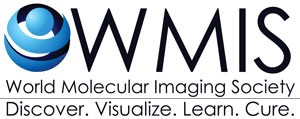This emphasis covers research whose primary innovation concerns bioengineering approaches at the level of proteins, genetic circuits and cells, which may have applications in multiple areas of biology rather than a specific disease. This includes reporter genes, cell-based biosensors, and related techniques. It also includes fundamental advances in gene-based and cell-based therapy (including genome editing) that apply to multiple biological or disease areas. In addition, it includes research in basic biology that does not fit into any of the existing biological or disease categories (for example, organismal development, evolutionary biology). Furthermore, research on “-omics” and systems biology approaches applicable to multiple biology/disease areas can be submitted to this emphasis.
Reporter Genes and Protein Engineering
This category covers novel reporter genes and protein engineering approaches with applications in multiple biology/disease areas.
Cell-Based Reporters, Therapeutics and Cellular Engineering
This category covers novel cell-based reporters, therapeutics, regenerative medicine and cellular engineering approaches with applications in multiple biology/disease areas. Genetic engineering and genome editing approaches are also included.
Tissue Engineering and Regenerative Medicine
This category addresses research in the fields of tissue engineering, regenerative medicine, organoid models and organs on a chip.
Systems and Basic Biology
Systems biology applications search for mathematical descriptions of physiological and pathophysiological processes at different scales. In this context, input data may derive from imaging and Omics. Basic Biology covers research in basic biology that does not fit into any of the other biological or disease categories (for example, organismal development, evolutionary biology).
Spatial Gene/Protein Mapping Technologies
Spatially resolved gene expression or spatial transcriptomics imaging (e.g. with the 10x Genomics platform, FISH, multiplexed FISH etc.) or mass spectrometry imaging (MSI)-based techniques (e.g. MALDI, DESI etc.) to visualize the distribution of proteins, peptides, metabolites, drugs etc. within tissues. Any other method that provides a quantitative readout of either whole transcriptome or targeted gene expression mapped to specific locations in a tissue
